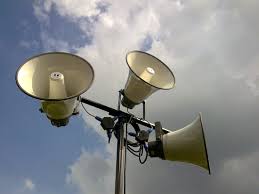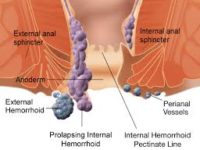 “A sound at 85 dB(A) is 100,000 times higher in sound pressure than the recommended daytime level of 35 dB(A) for patient areas”
“A sound at 85 dB(A) is 100,000 times higher in sound pressure than the recommended daytime level of 35 dB(A) for patient areas”
http://www.medscape.org/viewarticle/574813_2
On a morning when the Information Centre at Emena broadcasts were measured at my home they were somewhat lower than usual. The KMA recorded on their noise meter noises reaching my home to be 78db. The Emena Hospital is not far behind my home.
The following information is from Medscape.com, an online medical reference library:
The Inhospitable Hospital: No Peace, No Quiet: How Noise Affects Patients http://www.medscape.org/viewarticle/574813_4
Noise is antithetical to a therapeutic environment. More than a nuisance, noise is a real health hazard. Although the burden of morbidity attributable to noise isn’t known, there are indictors that the effects of noise on physical and mental health are significant. One of the most serious implications for patients in a continuously noisy environment is an increased risk of hypertension and ischemic heart disease. Noise-induced secretion of cortisol may be a mediator of cardiovascular responses to noise. Noise studies have also documented delayed wound healing, aggressive behavior, psychiatric symptoms, and increased re-hospitalization rates. Moore and colleagues found that surgical patients identified noise as the biggest irritant during hospitalization, and, post-operatively, surgical patients in a noisy environment require more pain medication than those in a quiet setting. Noise can even increase symptoms of heartburn in patients with gastroesophageal reflux disorder.
Noise also interrupts sleep in hospitalized patients, some of whom are particularly vulnerable to sleep disruption. Patients at high risk of having their sleep disturbed by noise include children, very low birth weight infants, pregnant women, anxious individuals, the elderly, and residents of long-term care facilities. The WHO recommends that for good sleep, background sound levels should not exceed 30 dB(A), with individual sounds no greater than 45 dB(A). Intermittent noise might be more disruptive to patients’ sleep than continuous noise.
Noise in the NICU
A unique problem exists in neonatal intensive care because preterm infants are exposed to a developmentally inappropriate acoustic environment. Sounds in the NICU are louder, more high-pitched, and more random and unpredictable than those in the womb. Preterm and ill neonates exhibit many unfavorable responses to noise, including unstable heart rate, respiratory rate, and oxygen levels. To promote sleep, the combination of continuous background sound and operational sound in infant rooms should not exceed an hourly Leq of 45 dB(A), the hourly L10no greater than 50 dB(A) (level that comprises no more than 10% of the time), and transient maximum noise levels in the NICU should not exceed 65 dB(A). To promote effective communication and minimize stress, noise levels in staff work areas, lounge areas, and family areas should not exceed an hourly Leq of 50 dB(A) and an hourly L10 of 55 dB(A), with peaks no greater than 70 dB(A).
Noise in Long-term Care
The gradual, almost insidious hearing loss that accompanies aging is so common, it has its own word: presbycusis. Presbycusis affects both ears equally and is greater for high-pitched sounds. The individual with presbycusis might be able to hear the low, rumbling sound of a truck, but not the ringing of the telephone.
The pattern of noise in a nursing home, like that in the hospital, follows human factor activities. Sound levels of 55-70 dB(A) were measured in one nursing home, levels that were lower than those in a teaching hospital. Residents transferred from long-term care to acute care might experience increased stress from additional noise.
Long-term care facilities could do more to promote independence of their residents by creating living environments that enhance, rather than aggravate, the diminished hearing acuity of the elderly. Susan Mazer, President and CEO of Healing HealthCare Systems, blames poorly designed physical spaces and routines often found in long-term care facilities. Noise reverberates in large dining rooms with high ceilings and hardwood floors. Radio and television played on overhead paging systems contribute to high background noise that makes locating ambient sounds difficult for residents. Intercoms are often unintelligible, and distracting noise such as vacuum cleaners, dishwashers, and fans are simply noxious. Music, used inappropriately, becomes a nuisance rather than an asset.






Dear Sir/madam.
I want to ask the Emena hospital management question, I have two sons was born in emena hospital, I came to ask about my sons birth registration or confirmation letter from emenahospital, the doctor on duty charge me Ghana (1000) cides , I want to ask management why emena hospital administration charged me that amount? Because I make sure to know the reason why doctor ask me that amounts. If I can not get good answer I will send letter to ask minister of health.